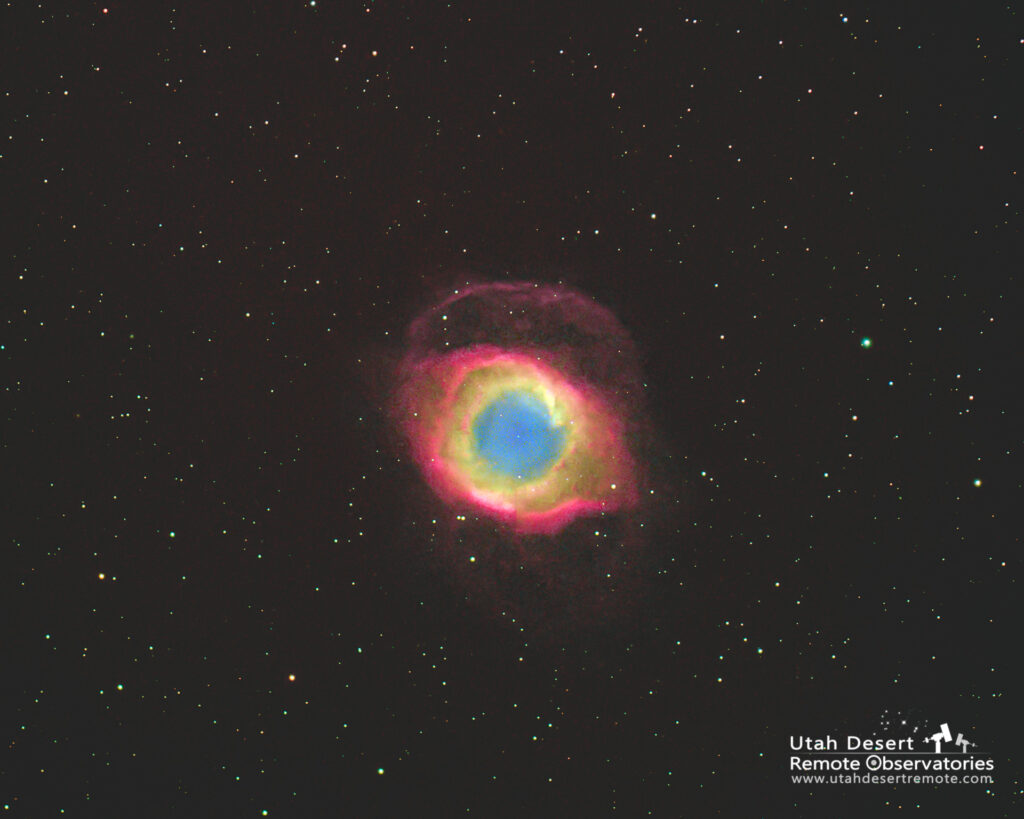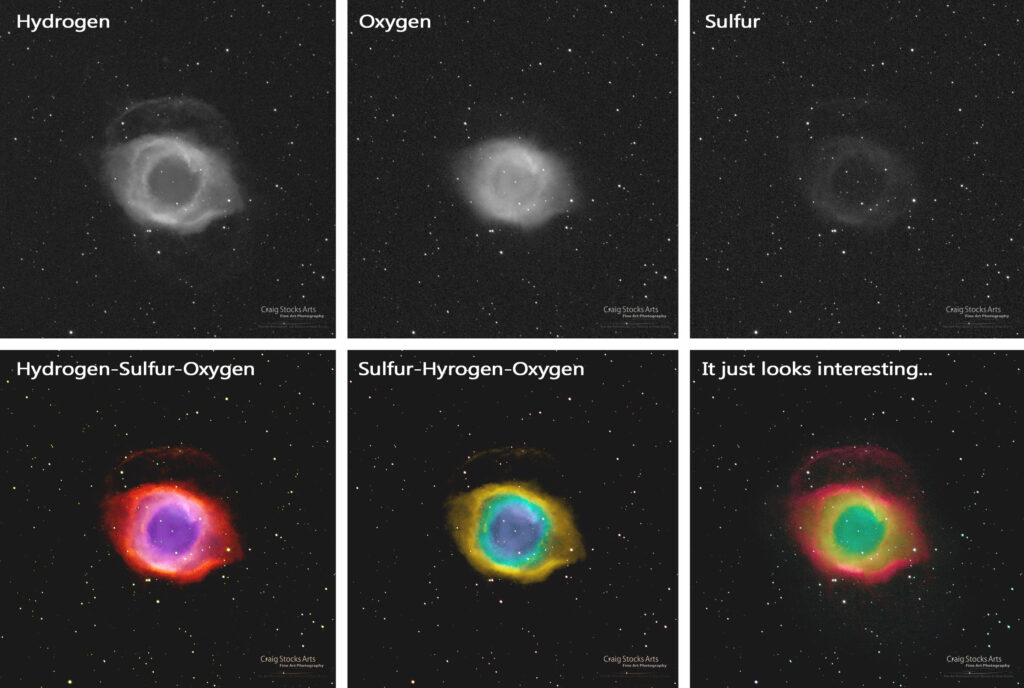
What color is your invisible ink?
When we look at the night sky through binoculars or a telescope we rarely see much color; our eyes just aren’t good at seeing color in low light. When we photograph astronomical features we frequently use a monochrome camera and special filters that pick out specific elements. The most common are hydrogen, oxygen and sulfur.

The example here shows the three sets of images of the Helix Nebula for each of the three elements. The fun begins when we start to combine the three and decide what color we want to use to represent each of the elements. Hydrogen and sulfur and both a red-ish color while oxygen is more of a blue so that’s a possible color choice.
The images shown here were all captured at the Utah Desert Remote Observatories location on Southwest Utah. Narrowband images are more tolerant of light pollution but you still find a significant advantage to the sort of dark sky you can find in the remote Utah desert. As LED light fixtures become more common the effects of light pollution are even greater since their light wavelength competes with the narrow bands of light captured with narrowband filters which washes out the image and makes it difficult or impossible to extract the details we’re after.
The process generally involves mapping the various elements to different colors using Photoshop or some other post processing software. Digital photos are made up of combinations of red, green and blue so the easiest approach is to map one element to red, one to green and the third to blue. We can get somewhat natural colors if we map hydrogen to red, sulfur to green and oxygen to blue. A different approach is to use the popular Hubble palette where sulfur is mapped to red, hydrogen to green and oxygen to blue – sometimes referred to as SHO. One advantage of the Hubble SHO palette is that it tends to create more color separation between the different gases.
But, we might have a variety of different goals in mind. One might be to represent the object as closely to what we would see if we could see it. Another choice might be to choose colors in a way that maximizes the distinction of each gas. And a third way might be to just make it look good. All three choices are valid but they can yield very different results.
